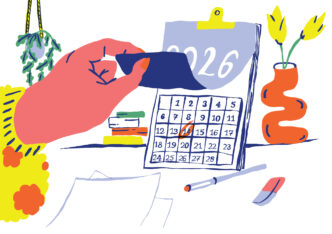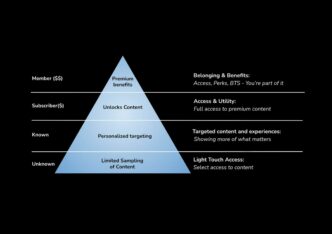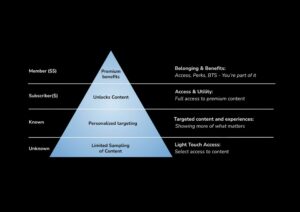

I was at the incredibly successful (and jam-packed) Audiencers’ Festival on the 24th of June 2025, and attended some truly insightful sessions by some of the most inspiring audience developers and marketing managers from the most innovative media houses in the world.
The buzzword of the day was ‘belonging’, the new KPI for newsrooms, and a sure-shot way to build sustainability – attracting and retaining audiences, ensuring brand loyalty. If you haven’t already, I highly recommend reading Heiko Scherer’s article detailing the idea of belonging and how newsrooms have successfully converted User Needs into powerful audience development drivers.
One of the ways to do so is, of course, via email newsletters.
The humble newsletter has come a long way, and just when you think we can’t possibly improve it any more, enter Zoé Tabary of the BBC, Elaine Piniat from Reuters, and David Topping, formerly with the Toronto Star.
Their work on experimenting with and refining newsletters to reach, convert, and engage audiences provides critical insight into how you can extract the maximum value from your audience’s inbox.
Newsletter for audience acquisition
The BBC’s Upbeat newsletter offers an interesting case study on how newsletters can help acquire new audiences and combat news avoidance.
Zoé Tabary, Senior News Editor at BBC, spoke about how the broadcaster has started engaging with underserved audiences, particularly news avoiders, with email newsletters.
BBC’s strategy was driven by data:
- Nearly 39% of people (up from 29% eight years ago) sometimes or often avoid the news, as stated in Reuters’ 2024 Digital News Report.
- Young readers are more interested in stories that inspire them, connect them to society, and entertain them than older generations, as the BBC’s internal audience research found.
- Its research also found that BBC’s consumption most aligned with heavy news fans, but that unserved audiences had great potential.
The questions was, how could the BBC reach younger audiences and fight news fatigue?
Zoé’s answer: with a weekly newsletter focused on positive news stories.
The BBC Upbeat Newsletter curates uplifting stories and acts as a gateway to drive engagement.
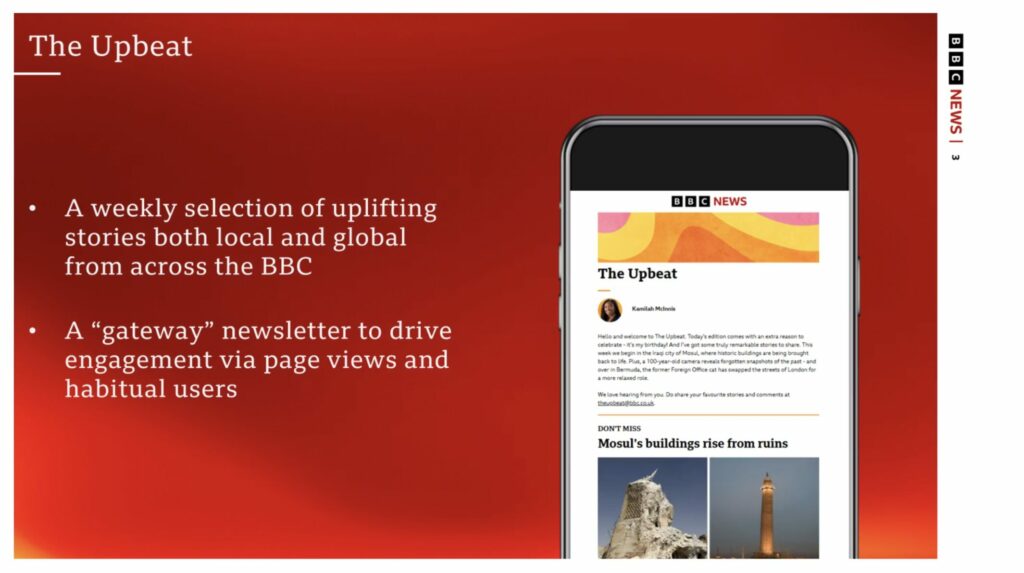
- It’s only around 600 to 700 words in length, with an informal, friendly tone
- It doesn’t give too much away and fills the curiosity gap by encouraging audiences to read more online
- It links to content from other platforms if the newsletter curators think it is interesting to the audience
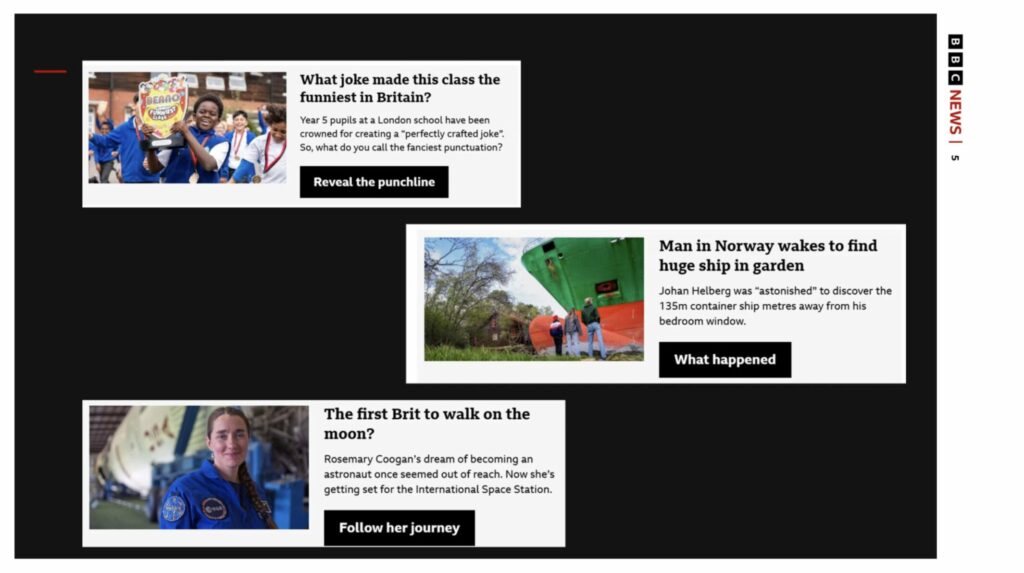
Thanks to this data-driven approach that focuses on User Needs, BBC has successfully driven engagement, page views and built habits with readers who previously avoided news content.
How can you approach making a targeted newsletter for your newsroom?
- Understand your audience demographics, and try to recognise segments with untapped potential.
- Consider the value proposition canvas to align your product (e.g. a newsletter) with this audience’s needs
- Consider having a dedicated newsletter curator (if possible) to build close relationships with your audience, but remember to maintain a consistent tone of voice.
- Involve the audience in the curation. If you receive a positive note or comment on your newsletter, don’t hesitate to respond to it in the next edition.
- Don’t shy away from sharing articles you find interesting and relevant from other media companies if it ensures a variety of content.
Newsletters for audience conversion
When Reuters launched a paid subscription model earlier this year, they replaced the data wall with a paywall, losing their most valuable newsletter subscriber acquisition channel. At the Festival, Elaine Piniat, Senior Manager of Newsletter Revenue Strategy, shared that this company-wide strategic shift encouraged her team to revisit their newsletter strategy, remodeling it with subscriptions at the centre.
They began by classifying their various newsletters into different buckets based on the intended audience and target KPIs.
- Automated newsletters: focused on advertisers and increasing traffic and ad revenues
- Briefings: focused on the general audience and driving conversions
- Industry newsletters: focused on subscribers and ensuring higher CTRs and retention
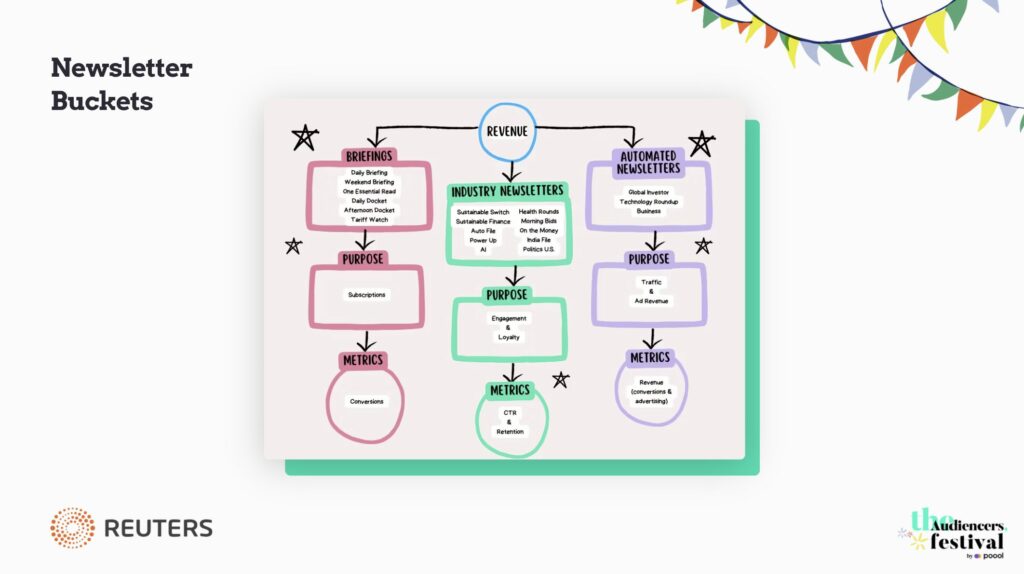
For instance, as part of the “briefings” bucket was Reuters’ Daily Briefing newsletter, which curates the day’s top news from around the world. It was a key conversion driver, but saw an increase in disengagement since the launch of subscriptions. Elaine explained that this could be due to frustration from users hitting the paywall, news fatigue with the 24/7 news cycle and natural churn.
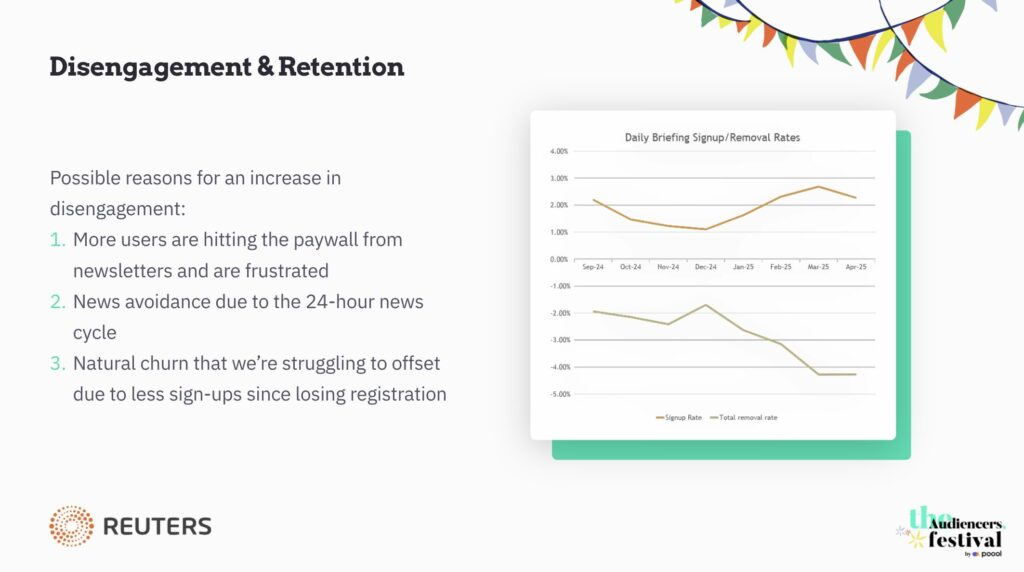
To tackle this, Reuters started a three-step re-engagement campaign made up of three emails:
- ‘You haven’t read the email in a while.’
- ‘Maybe your interests have changed. Here are our other newsletters.’
- ‘You’ve been unsubscribed.’
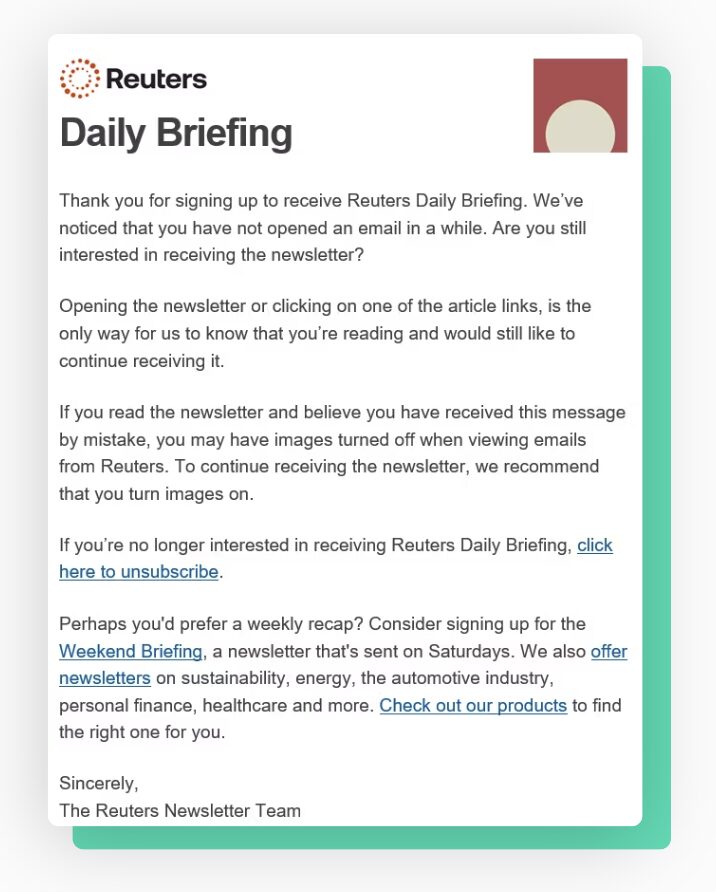
To be as data-driven as possible, they reach out to disengaged audiences and ask them via surveys and interviews why they signed up and why they disengaged.
If you are in the process of reevaluating your newsletter strategy, consider building off your mission with a holistic approach:
- Re-evaluate your mission when launching a paywall
- A/B test with that mission at the centre
- Consider all aspects of newsletter engagement, including disengagement, and re-engagement
- Find the right data models to support your mission
A tool that Piniat found helpful and recommended as an email service provider is GlueLetter, which gives you the data you need to better understand your newsletter audience.
For more inspiration on Reuters’ approach to newsletters, check out Elaine’s article on the five essentials of A/B testing.
Newsletters for audience engagement
David Topping, speaking about his time at the Toronto Star as newsletters director, highlighted the 4 things the Canadian daily did to drive engagement via newsletters. If you are a publisher struggling to make your newsletter relevant and valuable to your business, these four steps are a great way to ensure that every newsletter counts.
1. Find a magic word
Describe the audience’s problem you are trying to solve in one word, and use this as a solution to define the nature of your newsletter.
At the Star, they recognised three main buckets of such one-word solutions:
- If you want to make your audience feel special, your newsletter should be ‘the best’ or ‘premium’
- If you want to make your audience feel that they are ahead of the curve, your newsletter would need to be ‘up-to-date’ or ‘the latest’
- If you want to improve your audience’s access to the news, your newsletter would need to be ‘quick’ and ‘easy’
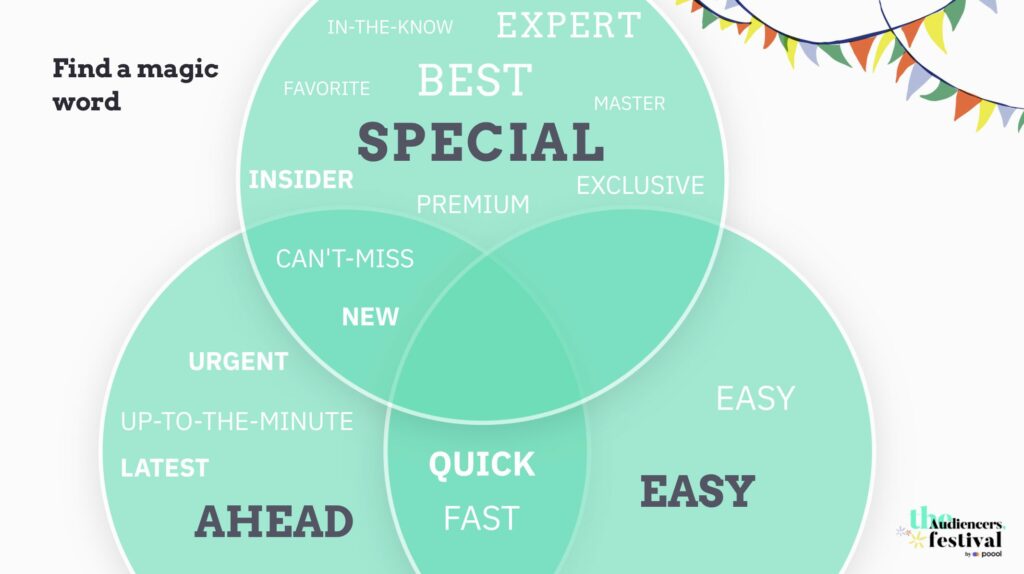
These words can then be used in the copy of the newsletter itself, and with teams internally to guide its curation.
As a bonus: Topping pointed out the one magic word that should go without saying for most newsletters, but one that is often not communicated with readers — ‘FREE.’
2. Link different
Hyperlinking articles in the headline or blurb is not the most effective way to entice audiences to click on them. Instead, try telling the audience explicitly why they should read the article.
- “Here’s what’s happening…”
- “Here’s what they are saying…”
- “Here’s how it is going to be…”
These should follow your headline and link directly to the article.
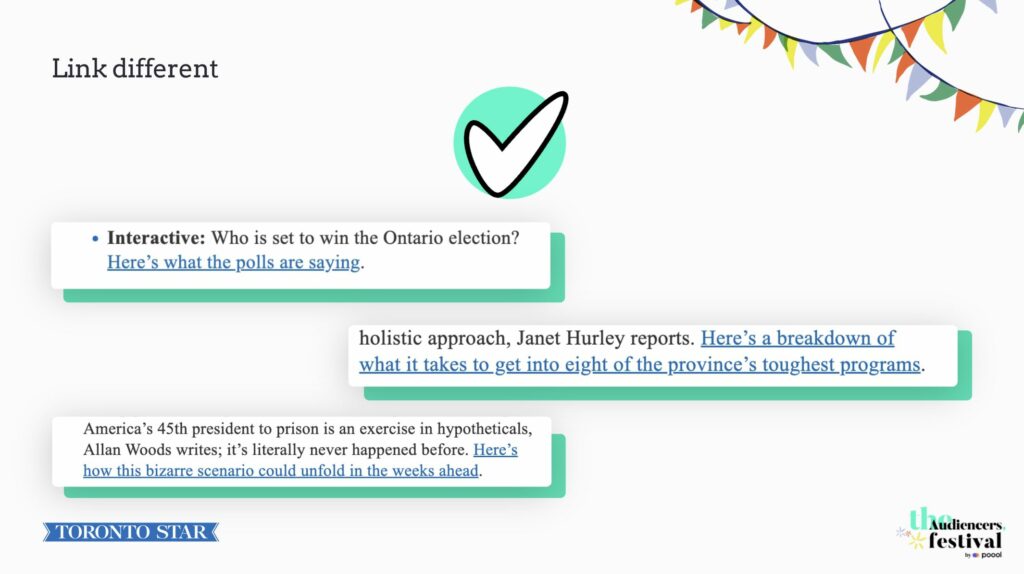
3. Make it a big stupid button (™)
Third, make your call to action noticeable. Topping’s suggestion, in his own words, is to “Make a Big Stupid Button.”
The idea is simple: if you want your audience to click on something, make it clickable, i.e. a button, with clear prompts like “Read more” or “Get the recipe”.
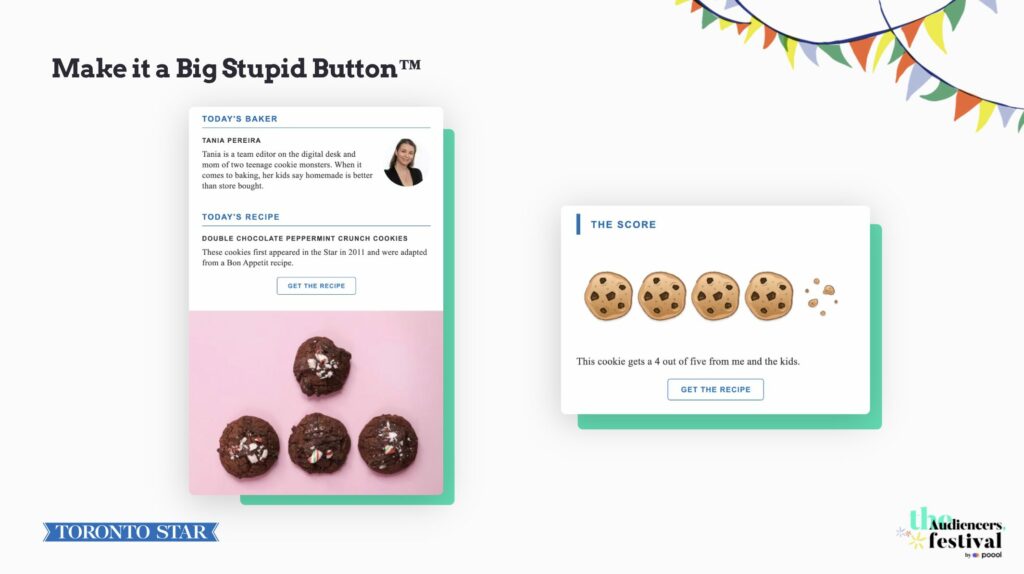
4. Embrace what’s clunky
The fourth and final tip was to embrace what’s clunky and find a way to work around the limitations of your company’s resources and technology when you develop a newsletter.
Essentially, it doesn’t matter if the newsletter isn’t perfect, as long as you follow the three tips above — define the newsletter’s purpose, shift your linking style to make it relevant, and make the call to action clear — you are ensuring greater engagement via your newsletters.
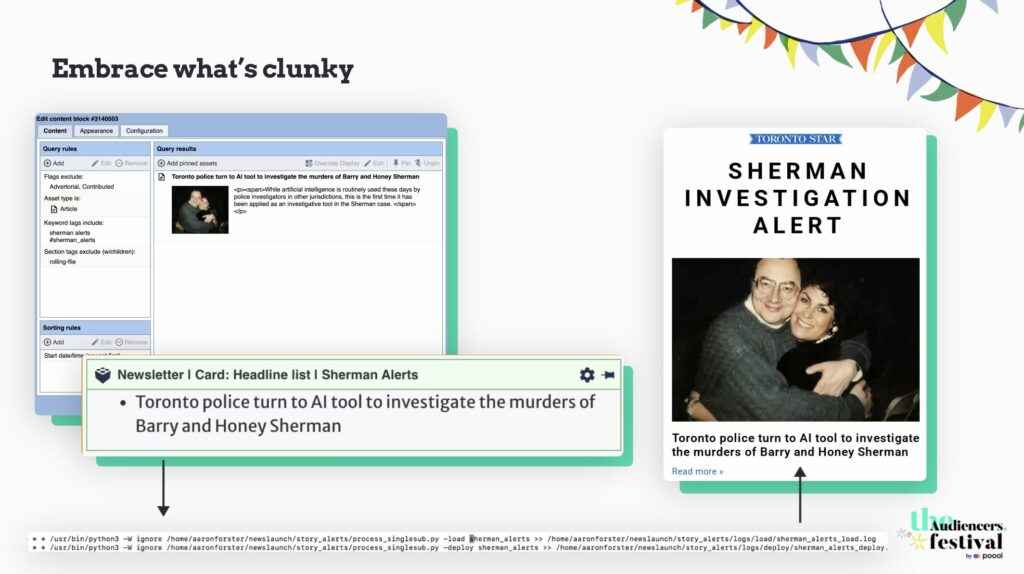
By looking at the above three case studies, you are sure to be able to make better decisions when it comes to crafting the perfect newsletter to ensure audience acquisition, engagement and retention.



